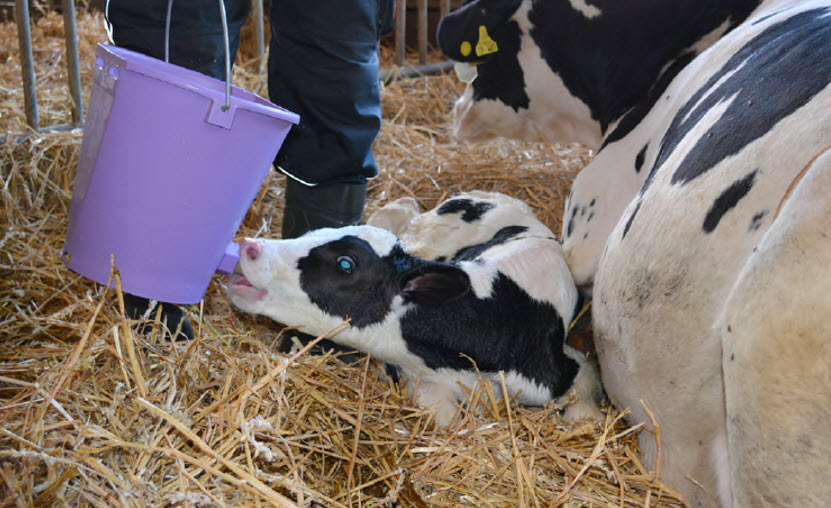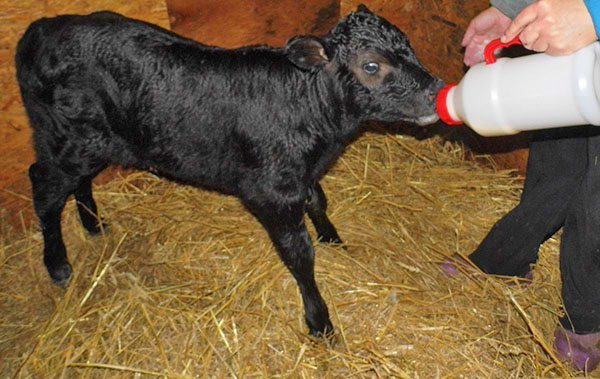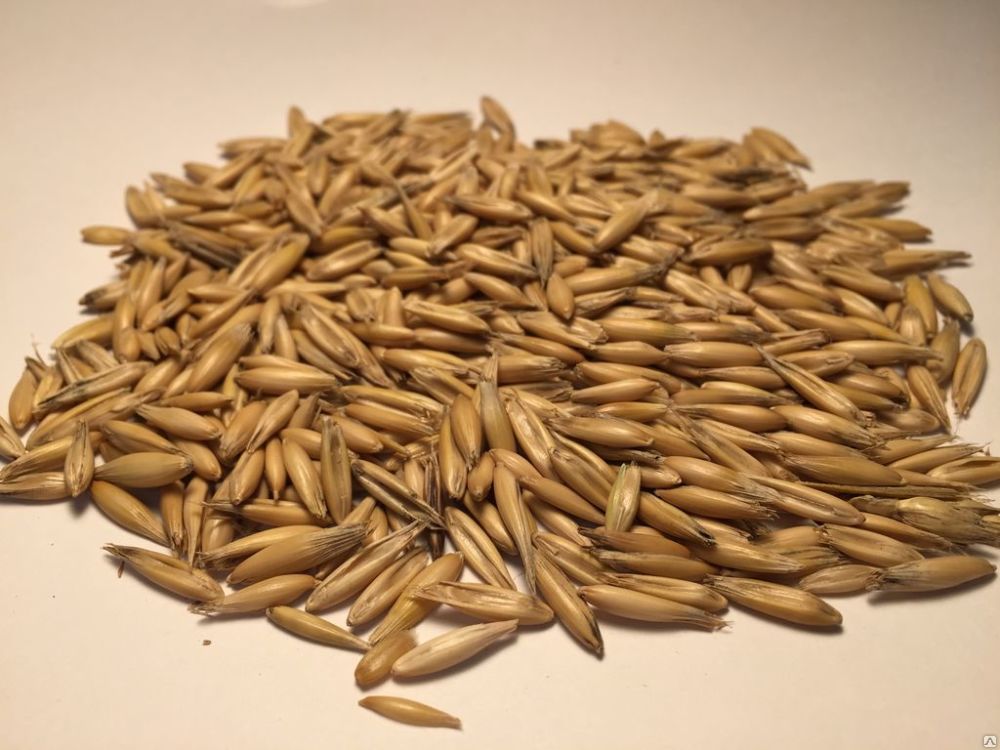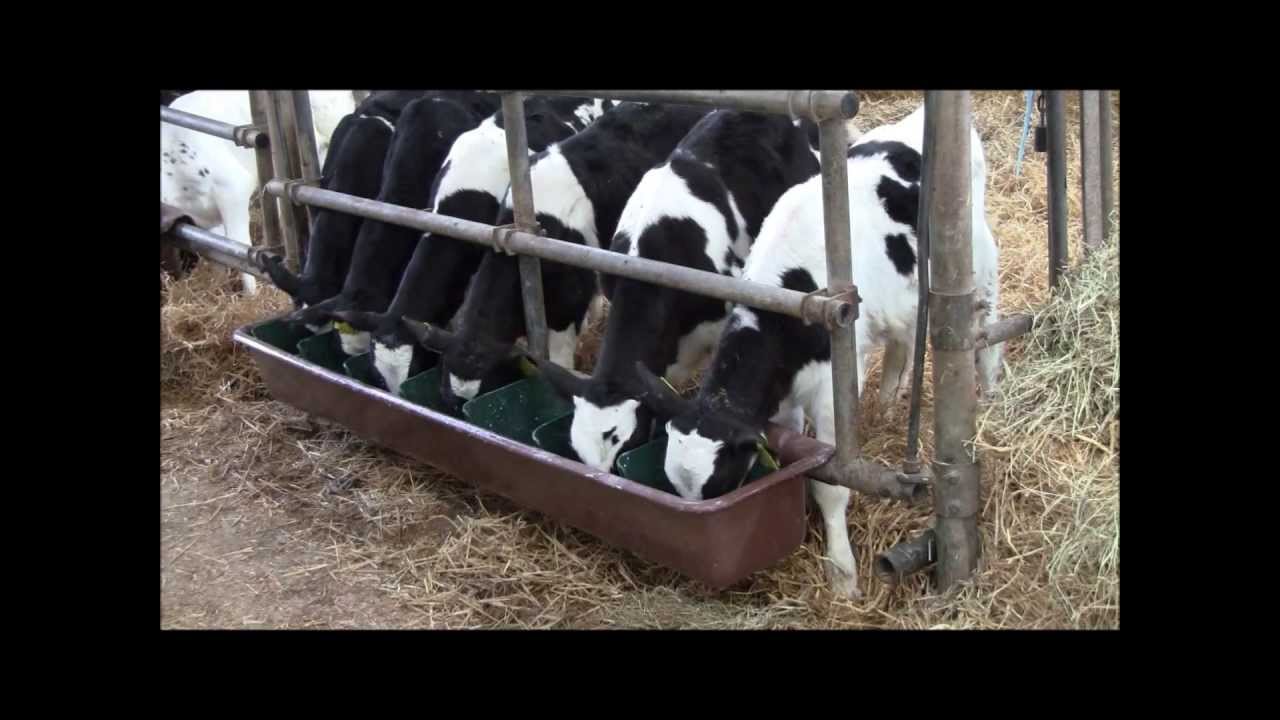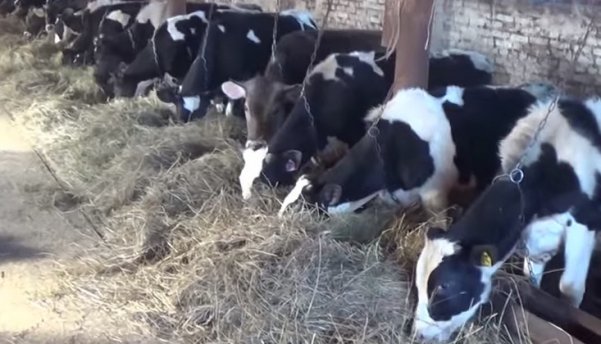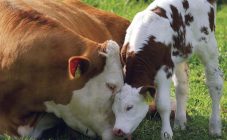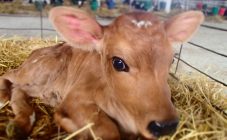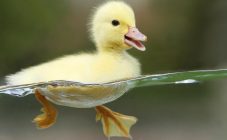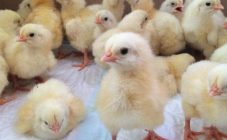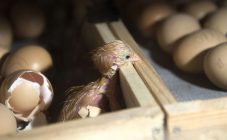Content:
With the correct formulation of the ration for calves, the health of the animals will become much stronger, growth will noticeably accelerate, and subsequent productivity will also increase. Before starting to compose a diet for young livestock, you should collect certain information about the characteristics of some components and the observance of proportions.
Features of the diet of newborn calves
Colostrum is the main component in feeding calves from the first days of life. During the first week, colostrum is the calf's only food source. In the first hour of life, the breastfeeding calf is applied to the cow's udder in order to reduce the risk of disease by more than 50%, as well as increase the chance of survival.
During the first few days after calving, bovine colostrum contains many beneficial compounds with vitamins and minerals. By consuming colostrum, the young begin to gain weight and grow faster. However, the amount of milk consumed by the calf must be closely monitored. At the time of the first meal, its volume should be 5% of the weight. The daily amount of milk on the first day of life of young animals should not exceed 20% of the mass, which is the weight of the animal. A further increase in the amount of milk by 4% is allowed. If consumed excessively, the animal may begin to vilify.
During the first three weeks of life, the young are preferably fed with a drinking trough. With this method, milk is poured into a special drinking bowl.
You can also feed milk directly from the cow's udder. The advantages of this method, which can be practiced during the first four days of life, are as follows:
- the risk of various diseases is reduced;
- the mixture does not need to be additionally heated or to perform any other actions with it;
- food intake by the calf occurs by taking small portions, because of which it is better absorbed;
- young growth grows at 30% intensity.
Sometimes the cow is deficient in colostrum, which makes it impossible to fully feed the calves. In this case, you should self-mix a healthy feed mixture of the following ingredients:
- one liter of cow's milk;
- four chicken eggs;
- 15 grams of fish oil;
- 4 grams of table salt.
The dosage of such a mixture when feeding is no more than one liter. The mixture should be given to the livestock every four hours at a certain time.
Diagram of how to water calves
There is a certain scheme for how to feed young calves, which is distinguished by the addition of certain components as they grow up.
One to three months
At the age of one month, young animals are taught to different types of feed. The main component of the diet is hay mixed with grated beets, carrots and apples, with the addition of potato skins. In addition, it is recommended to add concentrates to such a mixture.
After the meal is over, the trough should be free of food debris and washed thoroughly. Consuming stale food will lead to problems with the digestive tract.
In addition to vegetable feed, the animal should be fed with a special mixture, which is prepared from the following components:
- 10 grams of meat and bone meal (ground, for example, from the leg of a slaughtered cow);
- one liter of milk;
- 10 grams of chalk;
- table salt, the proportion is also 10 grams.
The consumption of feed will make up for the deficiency of such compounds as vitamins, calcium and phosphorus.
Two to three months
Upon reaching the age of two months of the young, the diet must again be adjusted by increasing the volume of concentrated feed and introducing small amounts of cake, in addition to the feed mixture consisting of oats with wheat and barley.
Also, at the age of two months, it is recommended to give more specialized combined feed purchased ready-made. Homemade juicy food should be a mandatory component of the diet.
The calf is given one kilogram of hay per day, pre-soaked in saline to reduce the risk of parasite infestation.
A good feed mixture rich in vitamins is the norm of 240 grams of raw potatoes mixed with chalk and salt, which should be given to the animal every day.
Three to six months
The daily dairy and plant ration of calves during this age period consists of the following components:
- one and a half kilograms of compound feed for calves;
- one and a half kilograms of hay with silage;
- five liters of skim milk;
- one and a half kilograms of beets with potatoes.
Six months and older
When compiling the diet of young animals, whose age has reached six months, a special role is played by the purpose for which the animal is raised.
Meat feeding implies an average daily diet, the description of which consists of a list of the following components:
- five-kilogram volume of compound feed;
- eight kilograms of chopped vegetables with root vegetables;
- three-kilogram mass of hay;
- large amounts of fresh or dry grass.
Also, the animal should drink enough clean water.
Features of the inclusion of some components
Compound feed
You can give a calf compound feed only after reaching one month. However, it should be given in small quantities, mixed with the herbal mixture, not excluding the use of colostrum. Gradually, the amount of compound feed in the diet increases.
Zucchini
Many novice breeders are wondering whether it is possible to give zucchini to calves. Vegetables such as courgettes can be fed to calves chopped up. You should start to include this plant component in your daily diet at the age of six months.
Oats
Fodder oats are an essential component of the daily diet of young cattle, which is part of the herbal mixture. Oats are included in the feed at the age of two months.
Types of calf feeders and drinkers
Drinkers
All types of drinkers can be divided into individual and group:
- Individual drinking bowls for young calves are used to supply water to tethered animals.The advantage of such devices is considered to prevent the spread of infections that young animals can swallow, which can cause a phenomenon such as diarrhea. A bottle or calf drenchers can be used as an individual drinker;
- Group drinkers allow several animals to have access to water at once. As a group drinker, you can install a bucket or trough, where clean water is poured to the top.
Feeders
All types of feeders can be divided into pasture and stall:
- The calf grazing trough is a large trough that fills the hay in order to avoid scattering or trampling, as well as loss of useful properties;
- A calf stall feeder is a small raised area in the aisle of a room such as a stall or barn, fenced in, behind which the livestock have to get up to eat.
Making a muzzle and collar
DIY spiked muzzle
The list of materials needed to create a spiked muzzle that helps wean youngsters from the udder includes:
- durable cotton fabric;
- braid;
- thick threads;
- two belts;
- spike;
- clasp.
To make such a device, you must follow the correct step-by-step algorithm.
Making a leash collar
The list of required materials from which to make a collar for a leash includes:
- rubber;
- nails with washers;
- rivets;
- small diameter steel pipe;
- hammer.
The collar is made as follows. The iron rod is clamped in a vice until a ring is obtained where the nail should be inserted. This square buckle must be welded tightly. A knockout is made from a metal pipe. A slot is made in the belt to insert the buckle. A plate is placed under the rivets. At the end of the collar manufacturing process, a loop is made into which the extra strap is inserted. In the old chain, one link is removed, on which the belt is put on and riveted.
Feeding tips without a cow
If the cow does not have enough colostrum to provide the youngsters with a healthy diet, experienced breeders advise the use of semolina, which quickly saturates the calf's body. To prepare such a mixture, four tablespoons of semolina are mixed with three liters of milk.
On the sixth day of life, the animal must be given sufficient water. Lack of fluid in the body will slow down the growth of young animals. Thus, two hours after consuming the feed mixture, the animal should receive a liter of boiled water at room temperature. In the third week, water is poured in large quantities into an ordinary drinking bowl.
There is another useful component, the use of which will significantly enrich the diet and will be really necessary when you have to solve the problem of how to feed a calf without a cow. At one week old, the newborn calf can eat hay. The selected herbs should be fresh, slightly dried, without coarse and dry inclusions. A bunch of hay must be secured to a section of the stall, located at ten centimeter level of the calf's back, or put in a trough.
However, the introduction of hay into the diet should be gradual. The first portion of such a vegetable feed, which includes hay, should be relatively small.By the age of three months, the volume of hay consumed should be one and a half kilograms.
There are a number of components recommended for introduction into food, which should be given according to a special schedule:
- from the age of two weeks, it is permissible to introduce a combined feed with the presence of concentrates;
- on the 17th day of life, they begin to feed with carrots;
- boiled apples with potatoes can be given for the third week;
- chalk with table salt is also introduced at three weeks of age;
- fodder beets are given to monthly calves.
Composing a ration than feeding young calves has many features. However, if you follow all the recommendations, adding useful components to the feed in the required proportions, you can grow a healthy and productive livestock.
